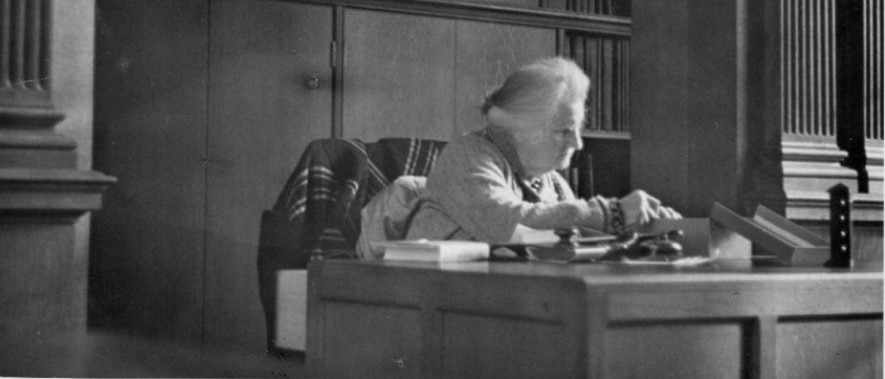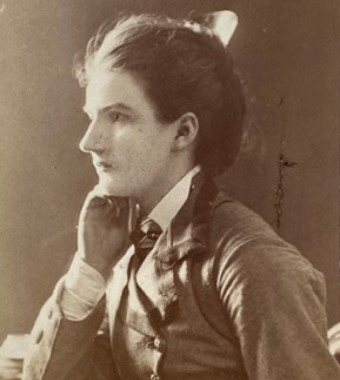Photograph of Mary Cataloguing at the old Marshall Library in Downing Street
Image reproduced by kind permission of the Principal and Fellows, Newnham College, Cambridge
"It was an essential part of Marshall's technique of teaching to encourage his pupils to read widely in their subject and to learn the use of a library." John Maynard Keynes
Following the death of the renowned economist Professor Alfred Marshall in 1924, the Marshall Library of Economics was founded in his honour by his widow Mary Paley Marshall, with support from John Maynard Keynes. Alfred had already cultivated a small library for the use of Economics students at Cambridge and had also gained a reputation as a generous lender of his own books. In his will he left his book collection to the University and together with the Departmental collection they formed the nucleus of the new Marshall Library.
Professor Marshall was an influential and inspiring teacher. Among his most important pupils were both Mary Paley - who would become, as well as Alfred's wife, an economist and economics lecturer in her own right - and John Maynard Keynes. It was these two who, by founding the Marshall Library, put into effect Alfred's wish to improve library facilities for Economics students and make Economics books more readily available to them. In his obituary for Professor Marshall, Keynes paid tribute to the genuine concern felt both by Alfred and Mary for the reading needs of Economics students, something corroborated by numerous anecdotes and reminiscences written by former students.
Professor Alfred Marshall and Principles of Economics
Professor Alfred Marshall was a found of neoclassical economics and one of the most influential economists of ahis time. His book, Principles of Economics became a core economics textbook in Cambridge and beyond for many years. Shove (1942) recalled on the centenary of Marshall's birth that, "In England it gradually acquired a position if not of such exclusive dominance as Mill's Principles had had in the generation after 185, at least comparable with that ... it became a leading text-book not only of its author's own University but wherever economics was seriously studied".
The first volume was published in 1890 to worldwide acclaim, establishing him as one of the leading economists of his time.
Proof copy of Book VII of the Principles ... Cambridge University Digital Library
In 2017 a Japanese Professor visited the Marshall Library and returned a long-lost proof copy of Book VII from the first edition of the Principles (1890). It is not known how this proof book, annotated throughout by Marshall himself, reached Japan. The proof book has been digitised in the Cambridge University Digital Library and is available to read online here : Marshall Library : Principles of economics. Book VII, Value, or distribution and exchange
You can read more about how the proof book was returned to us in this blog post:
Photograph of Mary Paley as a young woman
Image reproduced by kind permission of the Principal and Fellows, Newnham College, Cambridge
"Mary Marshall deserves a record of piety and remembrance, not only as the wife of Alfred Marshall, without whose understanding and devotion his work would not have fulfilled its fruitfulness, but for her place in the history of Newnham ... as the first woman lecturer on Economics in Cambridge, and for her part in the development of the Marshall Library of Economics in Cambridge in the last twenty years of her life".
John Maynard Keynes, "Mary Paley Marshall" (1944)
References
Shove, G.F. (1942) 'The place of Marshall's Principles in the development of economic theory.' The Economic Journal, Dec., 1942, Vol. 52, No. 208, pp. 294-329


